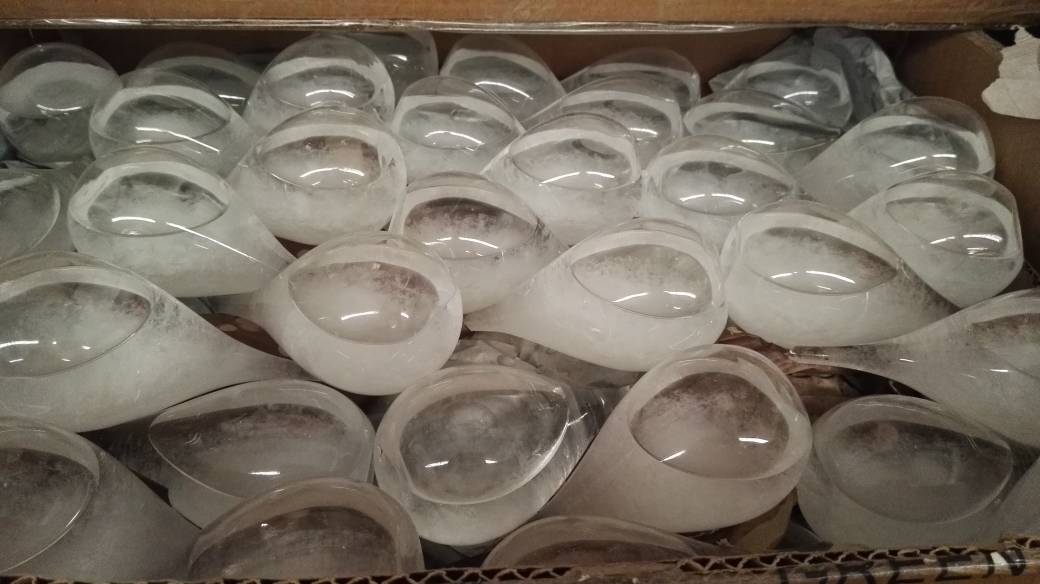Fitzroy Storm Glass

Storm glass
A storm glass is a type of weather forecasting device, composed of a sealed glass container filled with liquid. The appearance of the liquid purportedly predicts the weather, but most modern experiments have failed to confirm this.
Description[edit]
The liquid within the glass is a mixture of several ingredients, most commonly distilled water, ethanol, potassium nitrate, ammonium chloride, and camphor. This specific mixture was developed by Admiral Robert FitzRoy and used on his voyage with Charles Darwin on HMS Beagle.[1]
During the historic voyage, FitzRoy carefully documented how the storm glass would predict the weather:[2]
If the liquid in the glass is clear, the weather will be bright and clear.
If the liquid is cloudy, the weather will be cloudy as well, perhaps with precipitation.
If there are small dots in the liquid, humid or foggy weather can be expected.
A cloudy glass with small stars indicates thunderstorms.
If the liquid contains small stars on sunny winter days, then snow is coming.
If there are large flakes throughout the liquid, it will be overcast in temperate seasons or snowy in the winter.
If there are crystals at the bottom, this indicates frost.
If there are threads near the top, it will be windy.
In 1859, violent storms struck the British Isles. In response, the British Crown distributed storm glasses, then known as "FitzRoy's storm barometers," to many small fishing communities around the British Isles that were to be consulted by ships at port before setting sail.
Ingredients[edit]
2.5 g potassium nitrate
2.5 g ammonium chloride
33 ml distilled water
40 ml ethanol
10 g camphor
The potassium nitrate and ammonium chloride are dissolved in warm water and the ethanol and camphor are then added. The resulting solution is placed in a glass container and sealed.
Accuracy[edit]
An article in the Journal of Crystal Growth concluded that temperature change is the sole cause of crystal growth in storm glasses.[3]
Cecil Adams performed informal experiments with a storm glass and found that the success of prediction was no better than random chance.[4]



